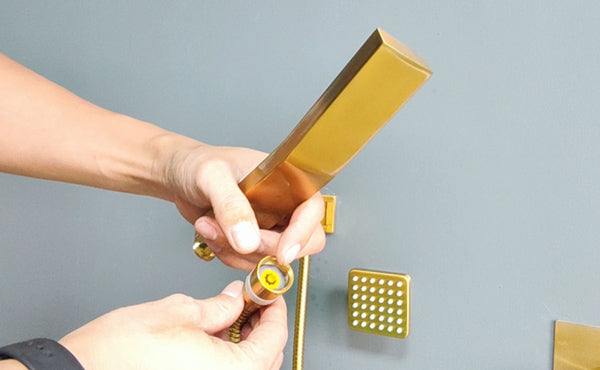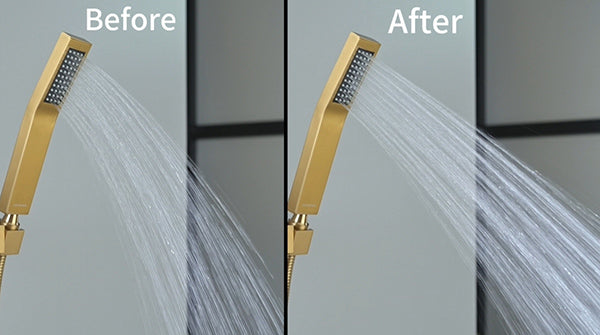
How to Remove a Flow Restrictor to Increase Shower Water Pressure
In the pursuit of the perfect shower experience, people often encounter the challenge of limited water flow. This is mainly due to the water flow restrictor - a device that is installed on the shower head to save water. However, for those who desire more powerful water pressure, removing this limiter can significantly improve your shower experience. This guide combines the latest hot topics about water conservation, legal implications in the United States, and practical steps for increasing water flow in your shower.
What is Water Flow Restrictor?
Flow restrictors are designed to limit water use to 2.5 gallons per minute or less, consistent with the U.S. Energy Policy Act of 1992. This legislation aimed at conserving water prompted manufacturers to install these devices in shower heads.

The Case for Removing Water Flow Restrictor
Rising trends in home wellness and luxury bathing have led many Americans to seek more powerful showers, believing that efficient water use should be balanced with personal needs and preferences. In addition, with people's increasing focus on personal health, stronger water flow is often considered to have therapeutic properties, helping to relax muscles and improve cleanliness.
Legal and Environmental Considerations
Before proceeding, it is critical to understand the legal and environmental implications. Removing flow restrictors may conflict with local regulations, especially in states like California that face water shortages. Additionally, increased water consumption not only impacts your utility bills, but also the environment, requiring a thoughtful approach.
Step-by-step Guide to Removing the Flow Restrictor
1. Gather Your Tools
You'll need adjustable pliers, a cloth, and possibly a screwdriver.
2. Protect Your Shower Head
Wrap the shower head with a cloth to prevent scratches when using pliers. The shower head can be a rain shower head or a handheld shower head.
3. Disassemble the Shower Head
Remove shower head from the shower hose.
4. Find the Flow Restrictor
It's usually a plastic disk with a hole in the center that's placed near the shower head threads.
5. Removing the Flow Restrictor
Carefully pry out the shower head flow restrictor using a screwdriver. If it's stubborn, gently twist to loosen.

6. Reinstall and Test
After disassembly, reinstall the shower head and test the water flow. You should notice a significant increase in pressure. It is important to monitor water consumption to prevent overconsumption.

To help you through the process, here is an instructional guide on locating and removing or replacing the water flow restrictor:
The following video on the topic "how to remove the flow restrictor to increase shower water" uses Bostingner handheld shower head and Bostingner water flow restrictor as examples to show you the step-by-step operation:
There are 3 ways you can use this information to get the results you want:
By following this guide, you can enjoy a more powerful shower while being mindful of water use and regulations. The conversation about water use and conservation continues to evolve, reflecting our changing values and the innovative solutions that emerge accordingly.
Ethical Considerations and Alternatives
For those concerned about their environmental impact, consider installing high-efficiency shower heads designed to provide a satisfying flow of water while still conserving water. These models use airflow technology or innovative patterns to enhance perceived pressure without increasing water usage.
In Conclusion
Removing the flow restrictor from your shower head can change your shower experience, but there are a few things to keep in mind. Balancing personal comfort with environmental responsibility is key. As we address the challenges of water conservation, technological advances continue to provide alternatives that meet both needs.
PS: Bostingner provides a variety of high-quality shower systems and shower accessories, and also supports DIY your shower set. If you have any needs, please contact us for more details.
Common FAQ about Removing a Flow Restrictor
Q: What is a water flow restrictor? Why is it installed on my shower head?
A: The water flow restrictor is a small component installed in a shower head to limit water consumption. It is designed to conserve water by limiting flow to a certain number of gallons per minute (GPM) required by federal and state regulations.
Q: Will removing the flow restrictor increase water pressure?
A: Removing the flow restrictor can increase water flow, which may give the impression of increased pressure. However, actual water pressure is determined by your home's plumbing system.
Q: Is it legal to remove the flow restrictor from the shower head?
A: This depends on your local laws and regulations. Some areas with water shortages may have strict regulations prohibiting changes to water fixtures to increase flow.
Q: How do you find the water flow restrictor in a shower head?
A: The water flow restrictor is usually a plastic disk located behind the shower head face or where it connects to the shower arm. It usually has a star or circular design.
Q: What tools are needed to remove the water flow restrictor?
A: You may need a pair of needle nose pliers, an adjustable wrench, and possibly a flat head screwdriver, and some Teflon tape to reseal the threads.
Q: Will removing the water flow restrictor damage my shower head?
A: If done carefully, removing the water flow restrictor will not damage the shower head. However, be sure to follow the instructions carefully and do not use excessive force.
Q: What should I do if the water pressure does not improve after removing the flow restrictor?
A: If there is no improvement, the problem may not be with the shower head. You may want to check for clogged pipes, faulty valves, or consult a plumber.
Q: Will removing the water flow restrictor affect my utility bill?
a: Yes, removing the water flow restrictor may increase water usage, resulting in a higher water bill.
Q: How to properly remove the water flow restrictor without causing leakage?
A: Make sure to reinstall the shower head securely and use Teflon tape on the threads to prevent leaks. Do not overtighten or you will damage the threads.
Q: What will be the environmental impact of removing the water flow restrictor?
A: Removing water flow restrictors increases water consumption, which can have a negative impact on the environment, especially in areas where water is scarce.
Q: Can the water flow restrictor be replaced after being removed?
A: Yes, you can reinsert the flow restrictor if you change your mind or if regulations require it.
Q: Do all shower heads have flow restrictors?
A: Most modern shower heads sold in the United States are equipped with flow restrictors to comply with federal regulations.
Tips: If the water flow is too high when you shower, you can add a flow restrictor to save your shower water. Read article "How to add a flow restrictor in your shower to save water" to help you save water.
Join Our VIP Gourp

Here we will do:
- Provide good after-sales service;
- Do giveaway activities every once in a while;
- You will have the opportunity to experience new products for free;
- We will select people who share good pictures or videos and give them a gift for free.
- Get the latest news of Bostingner, such as discounts, clearance, new product releases, tips, etc.
- Want to join us? Clik this link: Join Bostingner VIP Group



Leave a comment